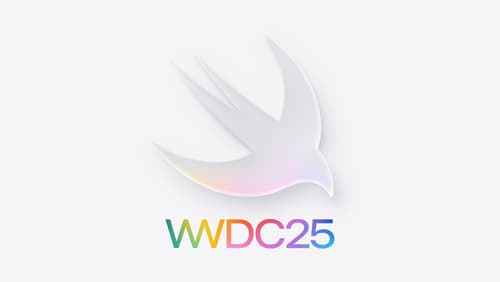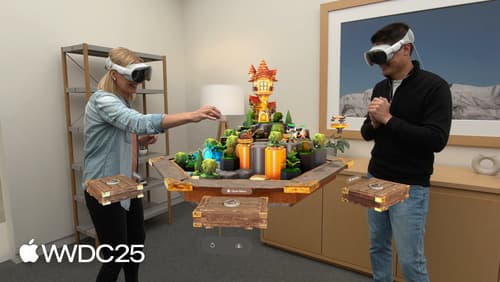what new features we can integrate in our app
Asked on 2025-06-12
•@wwdc251 search
At WWDC 2025, Apple introduced several new features and APIs that you can integrate into your app to enhance its performance and capabilities across various platforms. Here are some highlights:
-
App Intents: You can leverage new advances in App Intents to integrate your app's features throughout devices, including Shortcuts, Spotlight, and Visual Intelligence. This includes building interactive snippets and refining user experiences with new convenience APIs. For more details, check out the session Explore new advances in App Intents.
-
VisionOS: If you're developing for VisionOS, you can create immersive spatial experiences using new volumetric features in SwiftUI. VisionOS also supports shared experiences through SharePlay and Spatial Personas, allowing for collaborative interactions. Learn more in the session What’s new in visionOS 26.
-
SwiftUI: There are enhancements to SwiftUI, including new views and APIs for creating modern user interfaces. This includes support for widgets on VisionOS and CarPlay, as well as new APIs for relevance on WatchOS. Explore these updates in What’s new in SwiftUI.
-
UIKit: New menu APIs and improvements to animations and scene updates are available in UIKit, which can help streamline your app's UI and improve performance. Check out the session What’s new in UIKit.
-
App Store Connect: Over 100 new metrics in App Analytics and new features to help with app discoverability and user engagement have been added. These updates can help you grow your business on the App Store. For more information, see What’s new in App Store Connect.
-
Apple Pay: New features in Apple Pay, such as enhanced payment experiences and FinanceKit, can be used to improve customer interactions and app capabilities. Learn more in What’s new in Apple Pay.
These are just a few examples of the new features and APIs introduced at WWDC 2025 that you can integrate into your app to enhance its functionality and user experience.

Platforms State of the Union
Discover the newest advancements on Apple platforms.

Explore new advances in App Intents
Explore all the new enhancements available in the App Intents framework in this year’s releases. Learn about developer quality-of-life improvements like deferred properties, new capabilities like interactive app intents snippets, entity view annotations, how to integrate Visual Intelligence, and much more. We’ll take you through how App Intents is more expressive than ever, while becoming even easier and smoother to adopt. We’ll also share exciting new clients of App Intents this year like Spotlight and Visual Intelligence, and learn to write app intents that work great in those contexts.

What’s new in visionOS 26
Explore exciting new features in visionOS 26. Discover enhanced volumetric APIs and learn how you can combine the power of SwiftUI, RealityKit and ARKit. Find out how you can build more engaging apps and games using faster hand tracking and input from spatial accessories. Get a sneak peek at updates to SharePlay, Compositor Services, immersive media, spatial web, Enterprise APIs, and much more.
